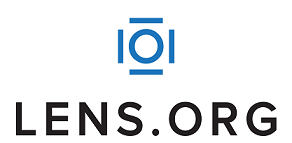PELAKSANAAN PROGRAM PERILAKU HIDUP BERSIH DAN SEHAT (PHBS) PADA SDN DI KOTA DENPASAR
DOI:
https://doi.org/10.37294/jrkn.v2i1.99Abstract
ABSTRAK.
Latar Belakang. Penelitian ini bertujuan untuk mengetahui gambaran pelaksanaan program Perilaku Hidup Bersih dan Sehat (PHBS) pada SDN di Kota Denpasar. Metode Penelitian. Desain penelitian yang digunakan adalah descriptive crosssectional. Penelitian dilakukan di empat SDN di Kota Denpasar yaitu Denpasar Selatan, Denpasar Utara, Denpasar Timur dan Denpasar Barat. Sampel dalam penelitian ini adalah siswa SDN yang berjumlah 262 siswa yang dipilih menggunakan teknik random sampling. Instrumen penelitian menggunakan Instrumen penelitian menggunakan kuesioner yang dikembangkan oleh peneliti dengan berpedoman kepada Peraturan Menteri Kesehatan Republik Indonesia No. 2269/MenKes/Per/XI/2011 dan Pedoman PHBS Tatanan Sekolah (DepKes RI, 2007). Hasil Penelitian. Sebagian besar komponen PHBS sudah mulai diterapkan di tatanan institusi pendidikan khususnya pada Sekolah Dasar. Namun, konsumsi makanan sehat seperti sayur dan buah pada saat siswa berbelanja di kantin sekolah masih kurang, namun dengan sebagian besar dari siswa mau berbelanja di kantin sekolah dapat dijadikan motivasi untuk membuat siswa lebih banyak mengonsumsi jajanan sehat daripada fast food. Pembahasan. Sekolah memiliki peran penting sebagai pendistribusian informasi ke siswa tentang pelaksanaan PHBS di sekolah atau di lingkungan. Sehingga, target 70% warga Indonesia mampu melaksanakan PHBS dapat tercapai. Simpulan. Pendekatan PHBS melalui tatanan institusi pendidikan meliputi kegiatan PHBS yang bias dilaksanakanpada institusi pendidikan yaitu cuci tangan, konsumsi jajanan sehat, jamban sehat, olahraga, pemberantasan jentik nyamuk, tidak merokok, membuang sampah dan pengukuran pertumbuhan.
Â
Kata kunci : Perilaku Hidup Bersih dan Sehat (PHBS), siswa sekolah dasar
Â
ABSTRACT.
Backgorund. This study aims to determine the description of the implementation of Clean and Healthy Behavior program at Elemantary School in Denpasar City. Method. The research design used is descriptive crosssectional. The study was conducted in four Elemantary School in Denpasar City namely South Denpasar, North Denpasar, East Denpasar and West Denpasar. The sample in this study were 262 students of Elemantary School selected using random sampling technique. The research instrument used the research instrument using questionnaires developed by the researcher by referring to the Regulation of the Minister of Health of the Republic of Indonesia No. 2269 / Menkes / Per / XI / 2011 and Guidelines of PHBS School Order (DepKes RI, 2007). Result. Most of the Behavior Clean and Healthy components have already begun to be implemented in the educational institutions, especially in elementary schools. However, the consumption of healthy foods such as vegetables and fruits when students shop in the school cafeteria is still lacking, but with most of the students want to shop in the school canteen can be a motivation to make students eat more healthy snacks than fast food. Discussion. Schools have an important role as the distribution of information to students about the implementation of Behavior Clean and Healthy in school or in the environment. Thus, the target of 70% of Indonesian citizens able to implement Behavior Clean and Healthy can be achieved. Conclusion. The Behavior Clean and Healthy approach through the educational institution arrangement includes Behavior Clean and Healthy activities that can be implemented in educational institutions such as hand washing, healthy snack consumption, healthy latrines, exercise, eradication of mosquito larvae, no smoking, waste disposal and growth measurement.
Keywords: Behavior Clean and Healthy, elementary school, students
 TEMPLATE JURNAL
TEMPLATE JURNAL







